At 1,838 meters, the Wendelstein near Rosenheim is considered one of the most beautiful panoramic mountains in the Bavarian Alps. And with one of the oldest active cog railroads in Germany, the ascent is also spectacular.
It goes without saying that such a highlight is not only suitable for mountain enthusiasts and railroad technology fans, but also for comparing two smartphones: after all, the spectacular views you get from there reach as far as the Grossglockner in Austria, the highest church in Germany, a deep cave that you can walk quite far into the mountain and an observatory on the summit.
So, we put on our mountain boots and made our way to Brannenburg to the valley station of the Wendelsteinbahn, where our test was set to begin. But first, let's take a look at the two smartphones that will accompany us on this test.
Please note: If your browser displays HDR images, the necessary data is only stored in the images from the Motorola phone. This may result in a different depiction of the images, with the Sony images appearing to have significantly less contrast and being much darker. We have made a direct comparison without HDR for our evaluation. Thanks to Alexander H. from the forum for the tip.
Facts and a first comparison
Our two test candidates are as follows:
- The Sony Xperia 1 VI is this manufacturer's current flagship model which has several rather unusual features for a high-end smartphone: It is fitted with a 3.5-mm jack, a microSD card reader and a camera shutter button. Speaking of cameras: Aside from a 48-megapixel Exmor T sensor, Sony has also quipped the phone with a 12-megapixel telephoto lens with up to 7.1x optical zoom. Its wide-angle camera features a resolution of 12 megapixels, too, and it has a field of view of 123°. The lenses were refined in collaboration with Zeiss. According to Sony, this time it has additionally made an effort to improve the phone's automatic functions, while at the same time, numerous professional options are available in the camera software to help users customize their photos. The Sony Xperia 1 VI could be found for around US$1,170 at the time of testing.
- We will be comparing Sony's smartphone with the Motorola Edge 50 Ultra which—at about US$1,000—is a bit cheaper. You do have to make some compromises when it comes to its processor, as it doesn't use the top-of-the-range SoC from Qualcomm—instead, it features the slimmed-down Snapdragon 8s Gen 3. In turn, it has been fitted with a huge 1-TByte storage capacity, so you can forgive the fact that it doesn't have a microSD card reader. Its periscope zoom lens has a resolution of 50 megapixels, i.e. a slightly higher resolution than the Sony smartphone after pixel binning. However, it only has a 3x optical zoom. The main camera's sensor comes from Omnivision and has a resolution of 64 megapixels.
We began our comparison as soon as we arrived at the valley train station and photographed the colorful trains of the Wendelstein cog railroad, which would take us up the mountain in a moment. Both lenses captured the dramatic light well on this cloudy day as the sun broke through the clouds and illuminated the surrounding landscape. The photo taken on the Sony Xperia 1 VI looks a little more vivid overall, with clearer contrasts and stronger colors. But this is only the first shot. We then made our way up to the Wendelstein to make further comparisons.
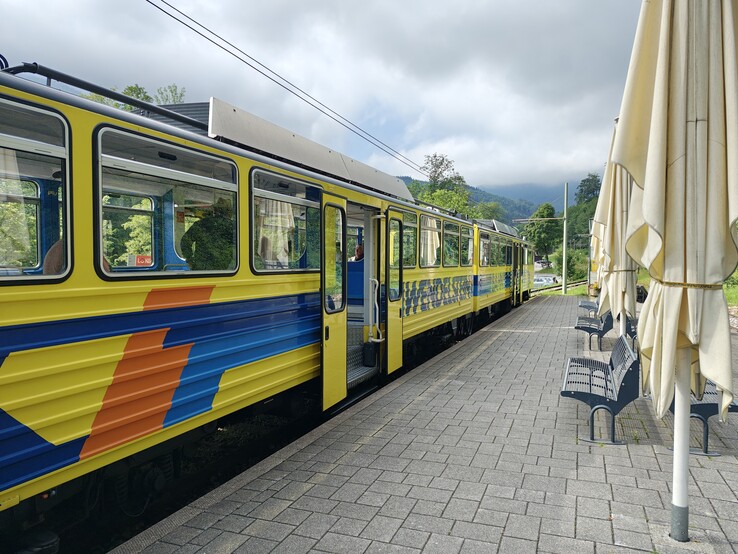
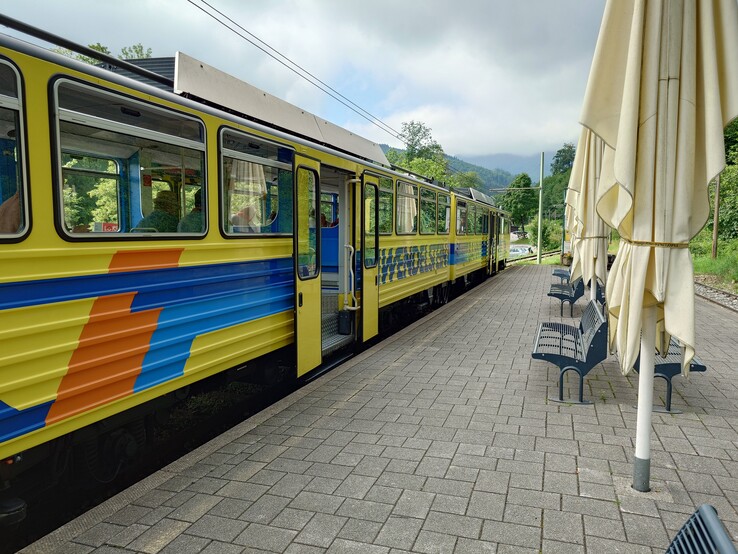
The first distant view
The ride on one of Germany's oldest rack railroads offers spectacular views. However, due to how much it jolts and because the windows can't be opened, it is almost impossible to compare photos during the ride. So we waited until we were on the visitor plateau, where we could get our first distant views as well as some refreshments.
Both of the test candidates displayed a spectacular view of the valley—the Sony Xperia 1 VI brightened up the mountain meadows and rocks in the foreground much better, but the clouds appeared more diffuse than on the Motorola Edge 50 Ultra, where they showed more contrast.
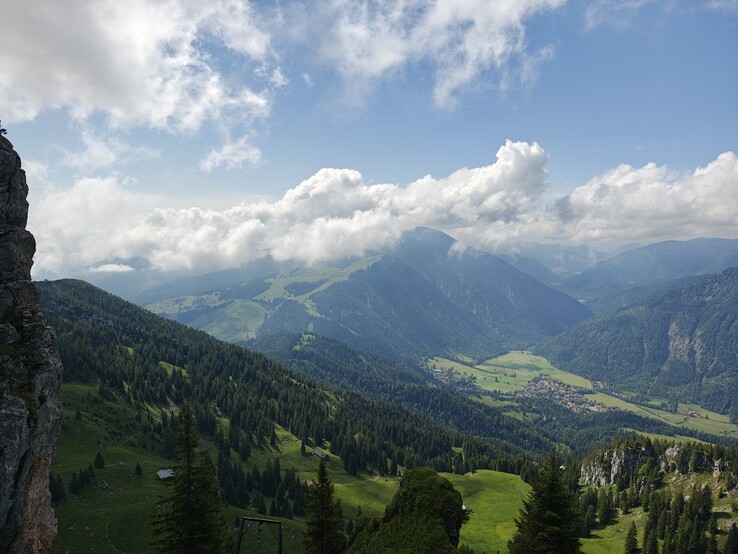
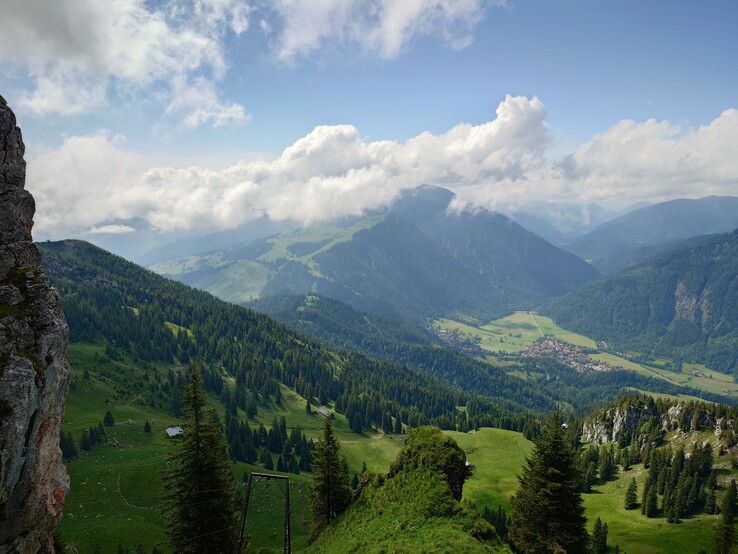
We turned around and looked up to the summit of the Wendelstein, where the Ludwig Maximilian University of Munich has an observatory. Right in front of us was the inn with its benches for tired hikers—after all, you can also climb the Wendelstein on foot if you so desire.
In a wide-angle shot, it became noticeable that the Motorola Edge 50 Ultra has a significantly larger field of view. Sony presumably crops the image to hide distortions caused by its wide-angle lens at the edges. If this is the case, the Motorola software does a very good job of eliminating these distortions, as no distortions can be seen on this photo despite its large field of view.
If you enlarge the pictures a little, however, you can see that Sony's camera takes much more detailed photos and, for example, the pub sign looks much sharper. Contours such as the red and white striped pole on the summit are also much sharper in the picture taken with the Sony phone and don't appear artificially sharpened.


Zoom series on mountain hut
Now it's time to take a closer look at the two cameras' zoom capabilities and to do so, we found a hut on a mountain meadow below and behind the cog railroad track. It should be noted that the somewhat hazy image quality is due to the passing clouds.
We started with the Motorola smartphone: While the wide-angle shot gives you a very good overview, the photo without zoom using the main camera shows the hut much closer. You can take great photos on the Motorola Edge 50 Ultra at up to 5x zoom, and the hut is super easy to recognize. After that, the digital zoom is used: While the photo still looks okay at 20x zoom, details are clearly lost when the zoom is increased to 50x. At 100x magnification, the image looks blurred.
As a replacement for binoculars, it's super handy to be able to get so close. For real photography, however, its quality at maximum zoom is too low to be of any real use.
In this aspect, Sony shows its professionalism and doesn't allow such gimmicks as an excessive digital zoom. It stops at 21x magnification, which is roughly equivalent to 3x digital magnification given the 7.1x optical zoom.
Still, the Sony phone doesn't do a particularly good job of post-processing the photos—even if you remove the cloud veil. Even at 5x magnification, the photo looks less detailed than Motorola's. At maximum zoom, i.e. 21x on the Sony Xperia 1 VI, the Motorola photo looks much more tangible and sharper in comparison.
Cave adventures
We went to the entrance to the Wendelstein Cave nearby. This leads deep into the mountain and should have been able to give us a good impression of how smartphone cameras deal with difficult lighting situations. The humid air inside the mountain posed an additional challenge for us and the camera lenses.
During the descent down 82 slippery steps, we turned around and photographed the cave entrance with both cameras. While the Motorola smartphone dealt with the situation very neutrally, the Sony camera created a rainbow-colored corona of light around the entrance. This was certainly the much more spectacular image, but the Motorola Edge 50 Ultra naturally comes closer to the real impression of the situation.
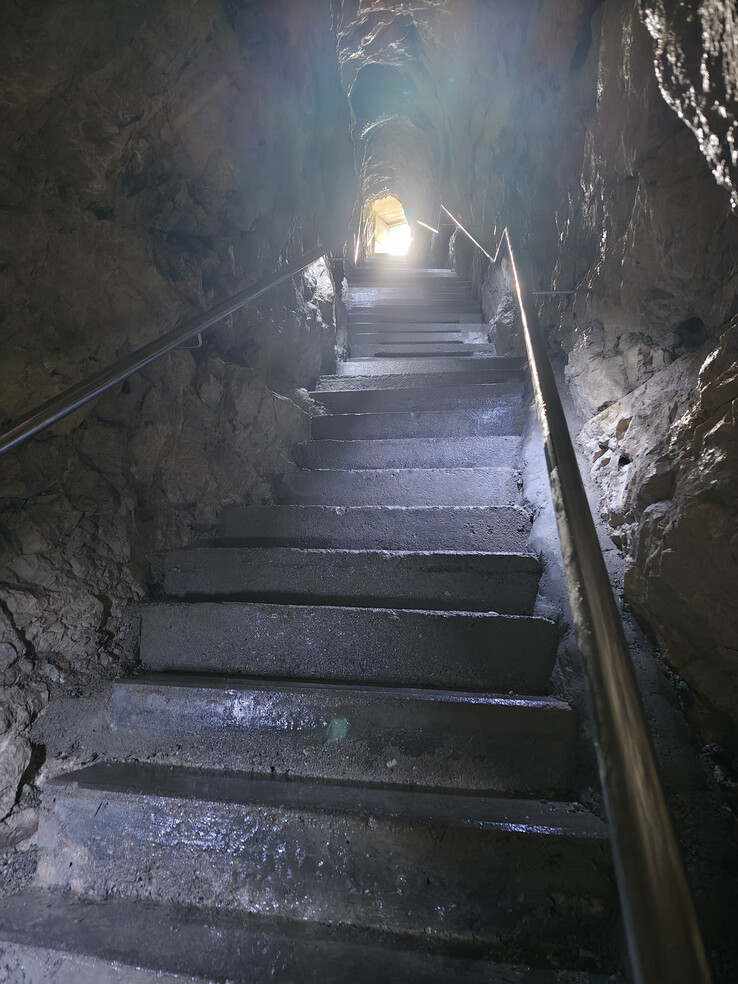

We entered further into the cave. There, we discovered the cold trap—the natural entrance to the cave whose special climatic conditions mean that there can still be snow there, even in summer. We decided to do a second series of zooms from the darkness of the cave up to the rock outside.
The Motorola phone took good pictures under these difficult conditions, but its very powerful digital zoom levels proved to be virtually useless in this situation.
The Sony phone showed less HDR optimization at low focal lengths and depicted the sky outside the cave only as a glistening light. When zooming in closer, however, it handled strong contrasts much better: the rock outside was shown in much greater detail. As soon as the digital zoom took effect, the image quality dropped sharply again.
Further inside the mountain
As we advanced further into the cave, we took a photo in its dim light. The Sony phone once again showed its superior sharpness of detail and depicted higher contrasts. Although the Motorola phone also brightened its photos up well, it produced a much flatter image with less contrast and fewer details.
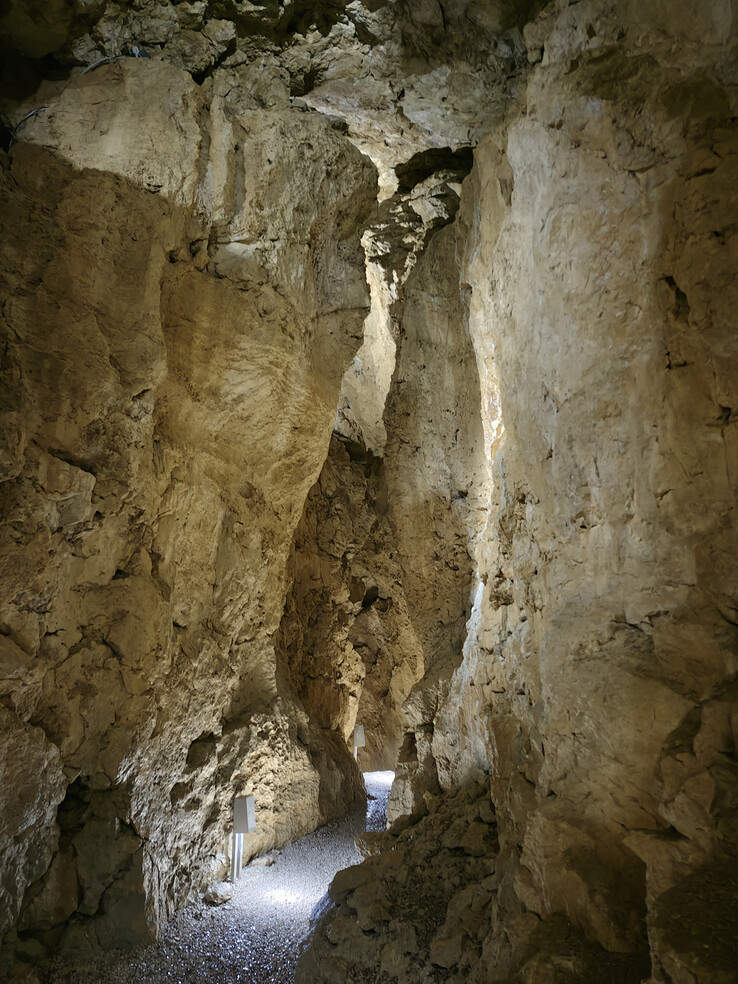
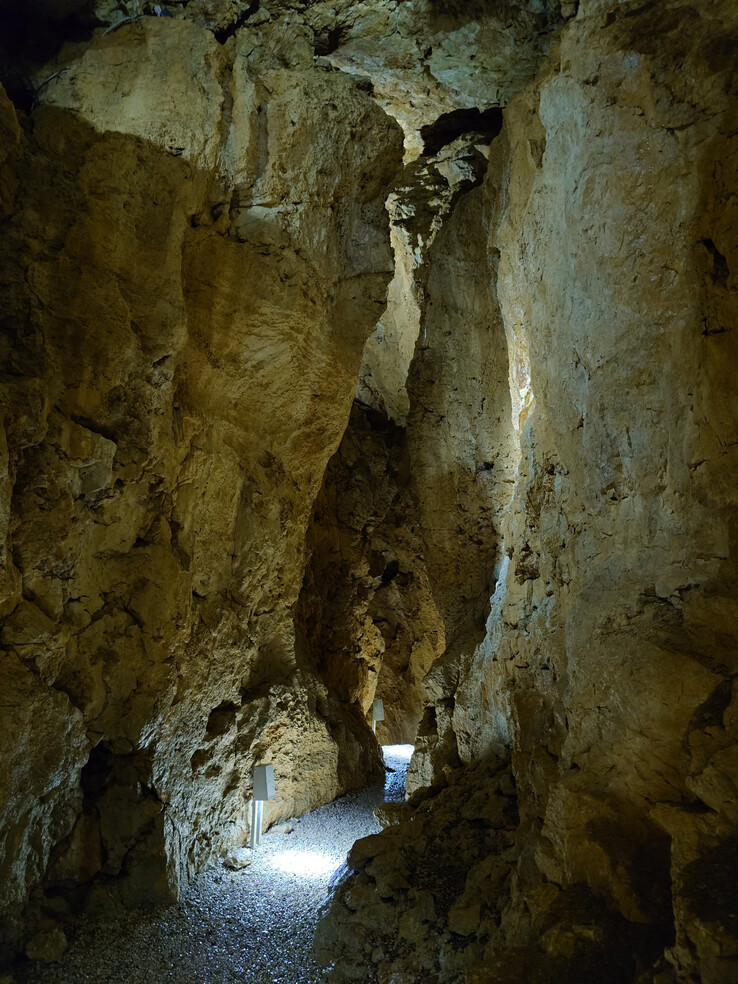
When we arrived at the "dome", the deepest accessible part of the cave, we took a comparison video with both smartphones in Full HD and at 30 fps. Again, the lighting conditions were of course difficult and you can see that the autofocus on both phones initially caused some problems.
Both phones also had a problem with the flickering LED lighting of the cross, as neither has an anti-flicker sensor like the Honor Magic4 Pro, for example. Overall, however, the video recordings looked good even in very low light.
Close-up shot on the mountain meadow
We went outside again and took a closer look at a flower in a mountain meadow.
We actually liked the photo taken on the Motorola phone much better in this instance, as it focused better and brightened the image up much nicer.


Verdict – The allrounder versus the one who makes it happen
It's not just Samsung or Apple that offer good camera phones—you can also take great photos with less common smartphones. Our trip to the Alps proved that the Sony Xperia 1 VI and the Motorola Edge 50 Ultra are both very well equipped for spectacular views.
However, the two smartphones have very different focuses: While it is very important to Sony to give photographers as much influence as possible over image composition—even in automatic mode—Motorola runs everything automatically if desired and it offers significant post-processing of images within a few milliseconds.
Sony has additionally made an effort to enhance its automatic mode and managed some really great image sharpness in its photos. Unfortunately, this wasn't always consistent, which means you'll often have to try around a bit with the Xperia 1 VI until you get the perfect photo. But when it works, the pictures are really great.
The Motorola Edge 50 Ultra, on the other hand, is a good allrounder that offers slightly more flexibility thanks to its higher zoom area and wider viewing angle when taking ultra-wide-angle shots. You can see from the pictures that the Sony phone features an even wider optical zoom range, whereas the digital zoom on the Sony phone fails completely.
If you like to try things out and don't require the best result the first time you take a photo, then the Sony Xperia 1 VI can take really great and extremely sharp photos of mountain ranges. The Motorola Edge 50 Ultra, on the other hand, proves to be more flexible.
We had a lot of fun taking photos with these two cell phones on the plateau and in the Wendelstein cave. Unfortunately, it was too cloudy that day for any real distant views. We would probably take the Motorola phone with us on our next mountain trip as a better all-rounder—even if the Xperia 1 VI's very good sharpness, great color reproduction and extensive possibilities have their very own appeal.






























































